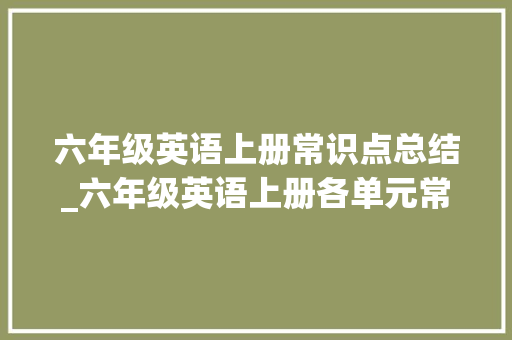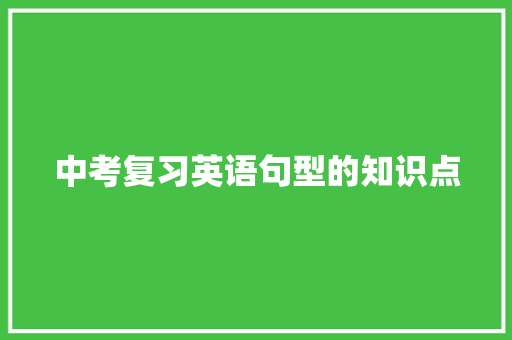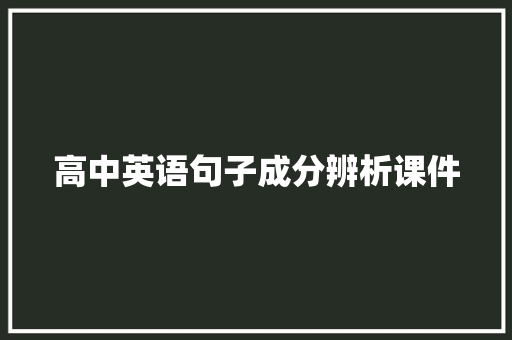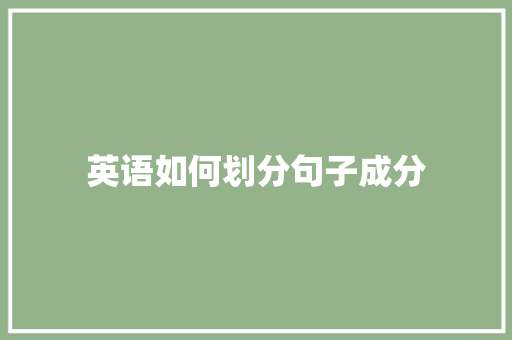(一) 主语
句子的主体,表示句子所说的是谁或是什么。
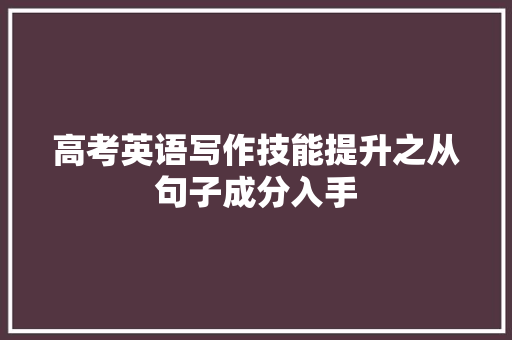
练习:请找出下列句子的主语并指出什么(词,短语或句子)可以充当主语。
1. The boy comes from Amierican.
2. He usually wenti to school alone.
3. Studying English is every important.
4. To teach him a lesson seems quite necessary.
5. That he won the prize excited everyone.
6. It is important for us to have our dreams.
7. It is obvious that he was wrong.
8. It is no use crying over spilt milk.
归纳:主语一般由名词、_______,或者相当于名词的词、短语或从句充当(包括_____,______还有_______)。另外,当句子的主语为_______,_________或_________时,主语部分太长,为使句子平衡,避免头重脚轻,常用it作形式主语。
(二)谓语
说明主语动作、状态或特征,由动词或动词词组充当。除了倒装等情况外,谓语总是位于主语的后面。既句子最主要的两大成分位置是:主语 谓语。
动词分为实义动词、连系动词、情态动词和助动词。实义动词单独作谓语,连系动词与表语一起构成谓语,情态动词与动词原形构成合成谓语,助动词与动词的适当形式(如:原形、现在分词、过去分词)共同构成谓语部分。
注意:谓语与主语在人称和数方面要相互照应。
练习:请找出下列句子的谓语并指出谓语的构成:是实义动词、连系动词+表语、情态动词+动词的原形还是助动词+动词的适当形式?
1. His parents are teachers.
2. The sun rises in the east.
3. We have finished reading the book.
4. You ought to work harder.
5. I felt cold.
6. He doesn't like music.
(三) 宾语
表示动作的对象,跟主语的性质差不多。一般由名词、宾格代词(me ,he等)或者相当于名词的词、短语或从句充当(包括不定式、动名词还有宾语从句)。宾语可分为直接宾语和间接宾语说明动作是对谁或为谁而做,直接宾语则是动作的承受着或结果。一般情况下,宾语都是在动词的后面, 它的顺序是:主语 谓语 宾语
练习:请找出下列句子的宾语并指出充当宾语的词(是名词、宾格代词、名词化的形容词、不定式、动名词还是宾语从句)?
1. He has never met her in person.
2. She handed him a book.
3. He likes to play basketball.
4. We enjoy listening to the music.
5. She said that she felt sick.
6. They sent the injured to hospital.
7. I find it possible to believe her any longer.
8. We consider it no good getting up late.
9. They believed it strange that he should have done that.
注意:当句子的宾语为_________、______、或_______时,常用形式宾语it,以保持句子的平衡。



